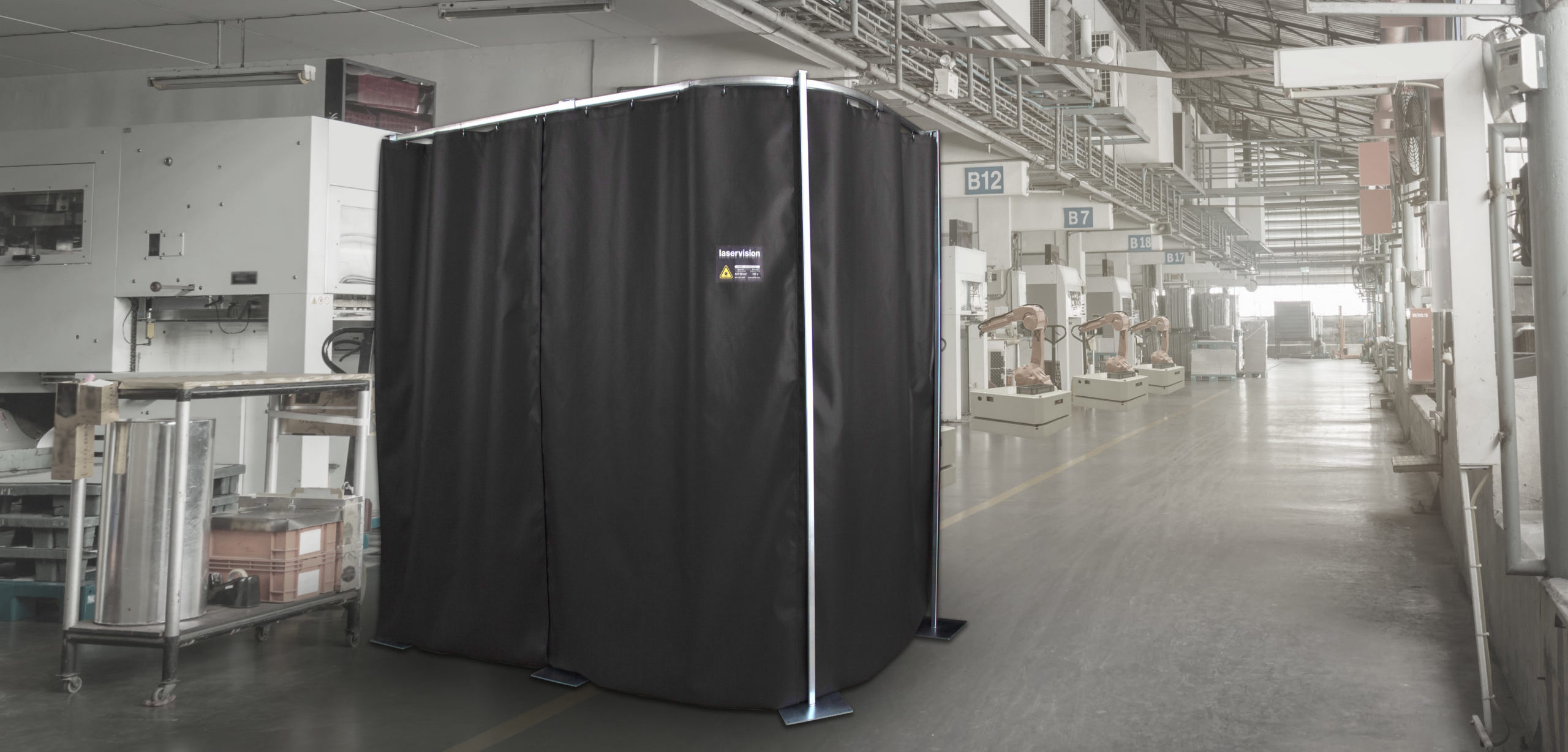
Laser Safety Curtain materials withstand direct and scattered laser light generated by Class 3B or 4 lasers as specified in ANSI: Z 136.1 – Section 4.4.2.5. The material is flame-resistant, passing requirements in accordance with NFPA Standard Number 701. The purpose of laser safety curtains is to be a protective barrier to ensure a safe environment against the maximum permissible exposure where lasers are in use. It is important to recognize that the use of laser safety curtains does not eliminate the need for wearing proper laser safety eyewear by anyone within the barrier’s walls during laser use. It is good practice to always have proper eyewear available near the barrier entrance for anyone who may need to enter the enclosed area.
Our laser safety curtains are made of fiberglass-based fabric with rubberized silicone coating. Knowing and understanding the specific maximum irradiance level of protection needed is key to determining which laser safety curtain material is best for a laser application. Our three material types have gone through vigorous testing with a wide range of laser wavelengths and output powers, including high wattages. Unless you have an onsite LSO who is familiar with laser irradiance, it is common that choosing the proper laser safety curtain material can be conundrum. At laservision, we have LSO’s (Laser Safety Officers) who can help determine protection needs.
Key points in determining proper protection levels:
Some applications of laser use, the user needs protection for scattered light only (diffused). In this case, there is no scenario where the laser head would be aimed at the barrier – the barrier would never take a direct laser beam hit. Other applications of laser use, the user needs protection against a potential direct beam hit to the barrier – the laser head could be pointed directly at the barrier. When there is a potential for a direct beam hit, the beam diameter when it reaches the curtain would need to be considered for proper curtain material selection. Each of these (diffused light / direct hit) are important pieces of information to know to determine which material is correct for a specific laser safety curtain need.
The output power of the laser (at each wavelength if more than one laser is in use) is part of determining which material will ensure proper protection. There are many combinations of laser wavelengths, output powers, beam diameters, diffused light, beams directly hitting a barrier – which is why there is not a “one-size-fits-all” when it comes to needing a laser safety curtain for a Class 3B or Class 4 laser.
Proper use of laser safety curtains:
Using a laser safety curtain to create a protective barrier against laser irradiation will work best when done right. Take accurate measurements of the space in which the barrier(s) will be installed. Consider this; is light tightness needed? If so, add a valance to the track and request drag on the curtain. Make sure the curtain can be mounted directly to the ceiling. With suspended threaded rods or floor mounted options, light tightness may not always be achievable.
Properly storing laser safety curtains when they are not needed is important in keeping the integrity of the curtains intact. Always roll, never fold a laser safety curtain. Folding can create permanent creases which could cause holes. Something to keep in mind – keep the tube the curtain ships in if there could ever be a need to store the curtain for future use.
Knowing when a curtain barrier is not enough protection is an important step in creating a laser safety barrier setup. In some applications, the laser in use may have an output power that is higher than a laser safety curtain would be able to properly protect against. Rigid panel barriers should be used in place of curtains in this situation.
Click here for additional information.